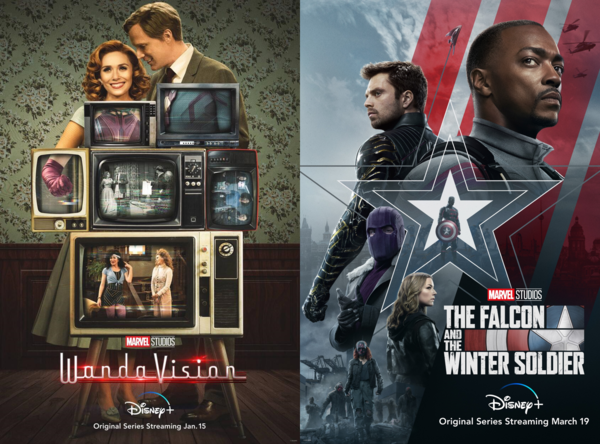After spending the entirety of 2020 without releasing any new content, Marvel Studios returned this year in a different form with its new Disney+ shows WandaVision, which ran from January to March, and The Falcon and the Winter Soldier, from March to April. After 2019’s Avengers: Endgame saw the end of the 11-year-long Infinity Saga and the stories of Marvel heavy hitters like Tony Stark and Steve Rogers, the studio’s long-awaited foray into the small screen answers the question that has lingered in the minds of hardcore fans and casual viewers alike: what’s next for the Marvel Cinematic Universe?

It’s important to note that taking a year-and-a-half-long hiatus was not initially in the MCU’s plans. But due to COVID-19 restrictions on production and theatrical releases, the studio was forced to push their release schedule back an entire year. This gave fans, who have gotten used to the regular release of new Marvel movies every few months, a much-needed break from “superhero fatigue”. And as they say, “absence makes the heart grow fonder.” When WandaVision finally released its first two episodes on Disney+, it found audiences the world over. Hashtags, characters, and memes related to the show would go trending on social media websites — even in countries where Disney+ isn’t available yet — whenever a new episode was released every Friday. This continued when The Falcon and the Winter Soldier ran for six weeks. In both instances, the shows made so much buzz that rumors about other MCU characters making surprise cameos spread like wildfire, raising expectations and, ultimately, disappointing some when they failed to come true.
Nonetheless, WandaVision and The Falcon and the Winter Soldier did more than just reignite the public’s interest in the MCU — they also explored characters and themes that the studio was never able to explore before in their big-budget blockbuster movies. Since television offers more intimacy and longer runtimes than cinema, the Disney+ Marvel shows were able to dive deep into issues like grief and loss, race and power, and explore characters like Wanda Maximoff and Sam Wilson who were relegated to supporting roles in their many previous appearances. Regardless of one’s opinion on the shows, one cannot deny that they have opened new avenues of storytelling for the MCU beyond the limitations of two-hour movies.
But this is not the first time Marvel has gained success in television and streaming. Before Disney+ was even established, shows like Agents of S.H.I.E.L.D. and Agent Carter on ABC, or Daredevil and Jessica Jones on Netflix gained huge followings and were praised for telling smaller, more grounded stories. While these shows were supposed to be set within the MCU, they were not produced by Marvel Studios, which meant that there was a lack of cohesion between the two mediums. Events in a Captain America movie could affect Agents of S.H.I.E.L.D., but never vice versa. With the Disney+ shows being produced by the same people behind the movies, characters and storylines intertwine between the two mediums, and only now has the MCU fully lived up to the promise of its slogan: “It’s All Connected”.
One thing the Disney+ Marvel shows have capitalized on is its weekly release schedule. Before Disney+, streaming services like Netflix popularized the “binge” model of releasing entire seasons of a show at once, allowing audiences to devour all the episodes in one sitting. When Disney+ first launched with shows like The Mandalorian, it opted to mimic traditional television by releasing an episode every week. Both WandaVision and The Falcon and the Winter Soldier have benefited from this, allowing them to stay in the public consciousness for longer, generating discussions and theories among strangers online, steadily gaining popularity week after week — more so than any Netflix original, which any viewer can finish within a few days of its release. Since Disney+ debuted, shows like The Boys Season 2 last year and Invincible this year, both more “mature” superhero shows on Amazon Prime Video, have decided to employ the same weekly release model. It would be no surprise if more shows and streaming services follow suit.
Marvel Studios has pushed the limitations of cinema previously with the Infinity Saga, and it may very well change television and streaming as we know it, too. And with shows like Loki, Ms. Marvel, and Hawkeye as well as movies like Black Widow, Shang-Chi, and Eternals set to release later this year, fans can expect a continuous stream of Marvel content with a wider, more diverse range than ever before. Whatever is next for the MCU, one thing is clear: nothing is out of reach.

